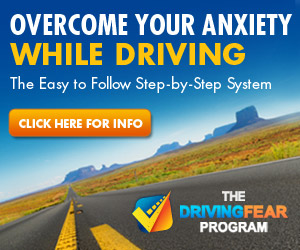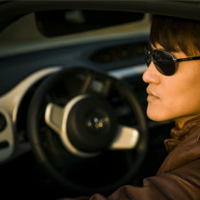Driving You Crazy – Driving Phobia and Its Treatment
It’s a surprise to most people, including those that suffer from it, that driving phobia is one of the most common phobias.
This is because it’s a hidden phobia: sufferers are embarrassed by it so they go to great lengths to accommodate and conceal their fear. And they think they are alone. But they are not.
Their condition is well understood by phobia specialists and their symptoms, avoidance patterns and responses are very similar to those of other silent sufferers.
What Is Driving Phobia?
Driving phobia is an irrational fear of driving, of being or feeling out of control whilst driving, causing dread, panic and avoidance. It is rarely skills related – most people with a driving phobia are good, competent drivers. They are usually normal, well-balanced people who once drove happily but are now anxious and panicky when driving or else don’t drive at all.
Who It Affects
A driving phobia is like getting a puncture: it happens to lots of people, it can happen to anyone and it makes driving very difficult or impossible.
And it’s very frustrating for sufferers because a part of them – the conscious, rational, thinking part – knows that they are good drivers and these situations are non-threatening. But they nevertheless find that when they are on certain roads or in particular driving situations, another part of them (the irrational unconscious part) drives out rational thought and fear floods in.
Experience shows that it is the more imaginative, creative or artistic people who are more prone to developing driving phobias. This is because phobias have a lot to do with the misuse of the imagination. So it can affect all kinds of people, irrespective of their driving skill.
The Cause
Driving phobia can be caused by a traumatic or unsettling event (such as an accident) but is usually caused by something much milder (like overtaking on a freeway, being stuck in a jam or going over a high bridge) which normally would be okay but at the time the individual was perhaps a lot more stressed that normal (background stress levels raised by other things like tiredness or financial, work or relationship problems) and this tipped them into a mild panic attack. The irrational mind (which is also responsible for survival and instincts) creates a pattern of this event and matches this to future times and places, triggering the same kind of panic response again and again. This builds into a phobia.
So driving phobia is linked to different things for different people – to driving on wide open roads like freeways (most common), to expressways, small roads, hills, high roads, bridges, flyovers, particular routes, junctions, to maneuvers (especially overtaking), to being boxed in by heavy traffic, to being close to particular vehicles (usually large or high-sided ones) or to being limited to a particular speed. It often starts on freeways and spreads to smaller highways or expressways, then to smaller roads, restricting the routes, speed and distances that can be traveled.
Safety Behaviours and Avoidance
Sufferers use numerous safety and avoidance strategies to accommodate and control their embarrassment and panic.
As more and more routes or situations are avoided, the sufferer’s world starts to close in. Energy and time are used in planning and driving alternative routes. They may have to drive at times when the roads are clear. Partners and friends may have to drive instead or have to take over en route. Excuses are made to avoid giving people lifts or traveling with friends and colleagues. Jobs and invitations may be turned down. People and situations are manipulated. Freedom and independence are diminished.
Over time such “solutions” interfere so much in life that they actually become part of the problem. At this point – and it can take years for someone with a driving phobia to get to this point – the sufferer acknowledges that they can’t change this themselves, and seeks professional help.
Treatment for Driving Phobia
There are now effective, pain-free, scare-free and drug-free treatments available for driving phobia, indeed, for any phobia.
The most remarkable of these is the Fast Phobia Cure which rapidly, reliably and comfortably de-conditions the patterns that drive the phobia. Using the Fast Phobia Cure most phobias – even extreme and long-standing phobias – can be eliminated in a matter of minutes.
Other common phobia treatments include the Emotional Freedom Technique (EFT) which can provide effective and fast relief, and Cognitive Therapy – designed to change the way you think about driving – is also useful but often involves exposure therapy and is more long-term.



